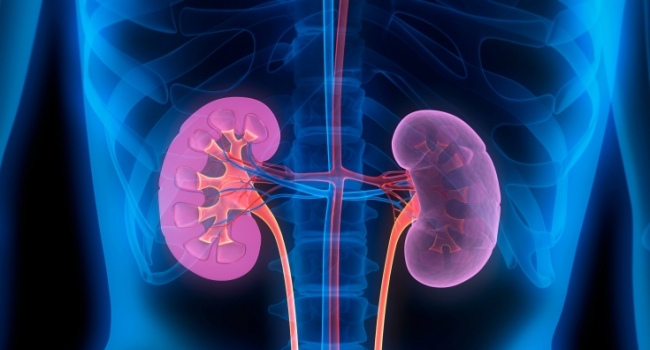- Latest news▼
-
12:27, April 23 Appetite: Scientists found out the secret to the appeal of large portions of fast food

-
10:33, April 23 Scientists test new approach to fighting viruses

-
08:38, April 23 Ketamine may help with postpartum depression

-
22:12, April 22 Unhealthy amount of sugar found in baby food products of a well-known brand

-
19:41, April 22 Air pollution puts health of more than 1.6 billion workers globally at risk

-
17:25, April 22 Scientists found baked goods and lack of sleep to be more dangerous than alcohol

-
16:02, April 22 342 cases of measles recorded in Armenia so far in 2024

-
15:29, April 22 BrainStimulation: electrical brain stimulation alleviates anxiety and depression in the elderly

-
08:27, April 22 Cognitively stimulating jobs in midlife could lower dementia risk in old age, study finds

-
20:37, April 21 Environmental Health Perspectives: Microplastics ingested with food and water can spread from the gut to the brain

-
22:41, April 20 Scientists develop new method to safely stimulate immune cells to fight cancer

-
20:46, April 20 Blood test can determine who is at risk of developing multiple sclerosis - scientists

-
18:36, April 20 Next pandemic likely to be triggered by flu - scientists

-
12:16, April 19 Scientists grow human mini-lungs in lab

-
10:23, April 19 JAMA Oncology: Urine test can help rule out high-grade prostate cancer with almost 100% accuracy, study shows

All materials
Scientists develop first urine-producing human kidney tissue within living organism

In a first, scientists have successfully produced human kidney tissue within a living organism which is able to produce urine, a significant milestone in the development of treatment for kidney disease.
As The Deccan Chronicle reports, kidney glomeruli - constituent microscopic parts of the organ - were generated from human embryonic stem cells grown in plastic laboratory culture dishes containing a nutrient broth known as culture medium, containing molecules to promote kidney development.
They were combined with a gel like substance, which acted as natural connective tissue - and then injected as a tiny clump under the skin of mice.
After three months, an examination of the tissue revealed that nephrons: the microscopic structural and functional units of the kidney - had formed.
The new structures contained most of the constituent parts present in human nephrons - including proximal tubules, distal tubules, Bowman's capsule and Loop of Henle.
Tiny human blood vessels - known as capillaries - had developed inside the mice which nourished the new kidney structures, according to a study published in the journal Stem Cell Reports.
"We have proved beyond any doubt these structures function as kidney cells by filtering blood and producing urine - though we can't yet say what percentage of function exists," said Sue Kimber from University of Manchester in the UK.
"What is particularly exciting is that the structures are made of human cells which developed an excellent capillary blood supply, becoming linked to the vasculature of the mouse," Kimber said.
"Though this structure was formed from several hundred glomeruli, and humans have about a million in their kidneys - this is clearly a major advance," Kimber said.
However, the mini-kidneys lack a large artery, and without that the organ's function will only be a fraction of normal.
So, the researchers are working with surgeons to put in an artery that will bring more blood the new kidney.
To test the functionality of the new structures, the team used Dextran - a fluorescent protein which stains the urine- like substance produced when nephrons filter the blood, called glomerular filtrate.
The Dextran was tracked and detected in the new structures' tubules, demonstrating that filtrate was indeed being produced and excreted as urine.
Follow NEWS.am Medicine on Facebook and Twitter
- Video
- Event calendar
- Archive
- Most read
month
week
day
- JAMA Oncology: Urine test can help rule out high-grade prostate cancer with almost 100% accuracy, study shows 1187
- Daily Mail: Elderly woman in China gets infected with brain-eating amoeba 1156
- The Conversation: childhood trauma can cause pathological hoarding 1139
- Obesity: exercising before breakfast helps you lose weight faster 1139
- Daily Mail: Satiating food reduces cravings for sweets, nutritionist says 1111
- First Armenian-German Conference entitled “Heart Failure Spring School” 1060
- Scientists grow human mini-lungs in lab 1059
- Why do kids usually recover from COVID-19 more easily than adults? 1011
- Next pandemic likely to be triggered by flu - scientists 622
- Scientists found baked goods and lack of sleep to be more dangerous than alcohol 561
- Blood test can determine who is at risk of developing multiple sclerosis - scientists 512
- 342 cases of measles recorded in Armenia so far in 2024 507
- Scientists develop new method to safely stimulate immune cells to fight cancer 506
- Cognitively stimulating jobs in midlife could lower dementia risk in old age, study finds 490
- BrainStimulation: electrical brain stimulation alleviates anxiety and depression in the elderly 442
- Find us on Facebook
- Poll





